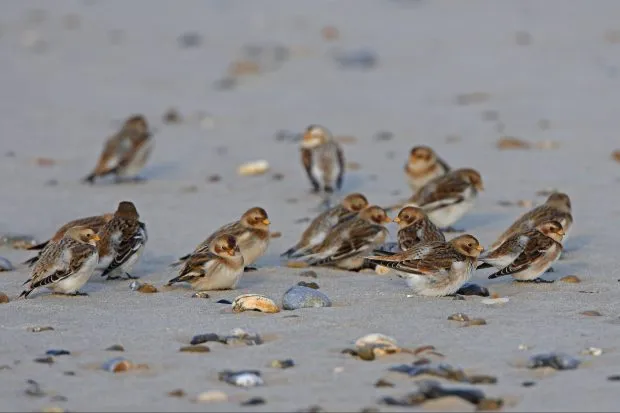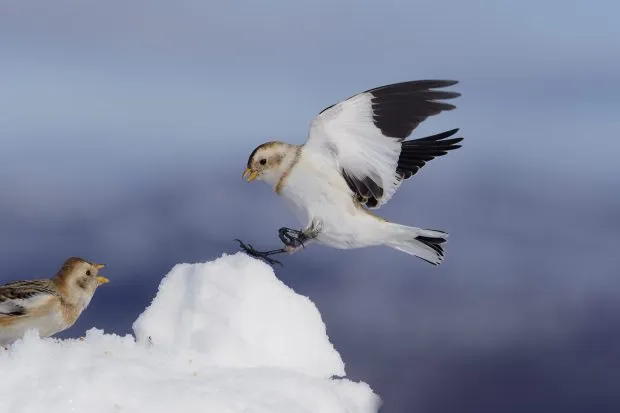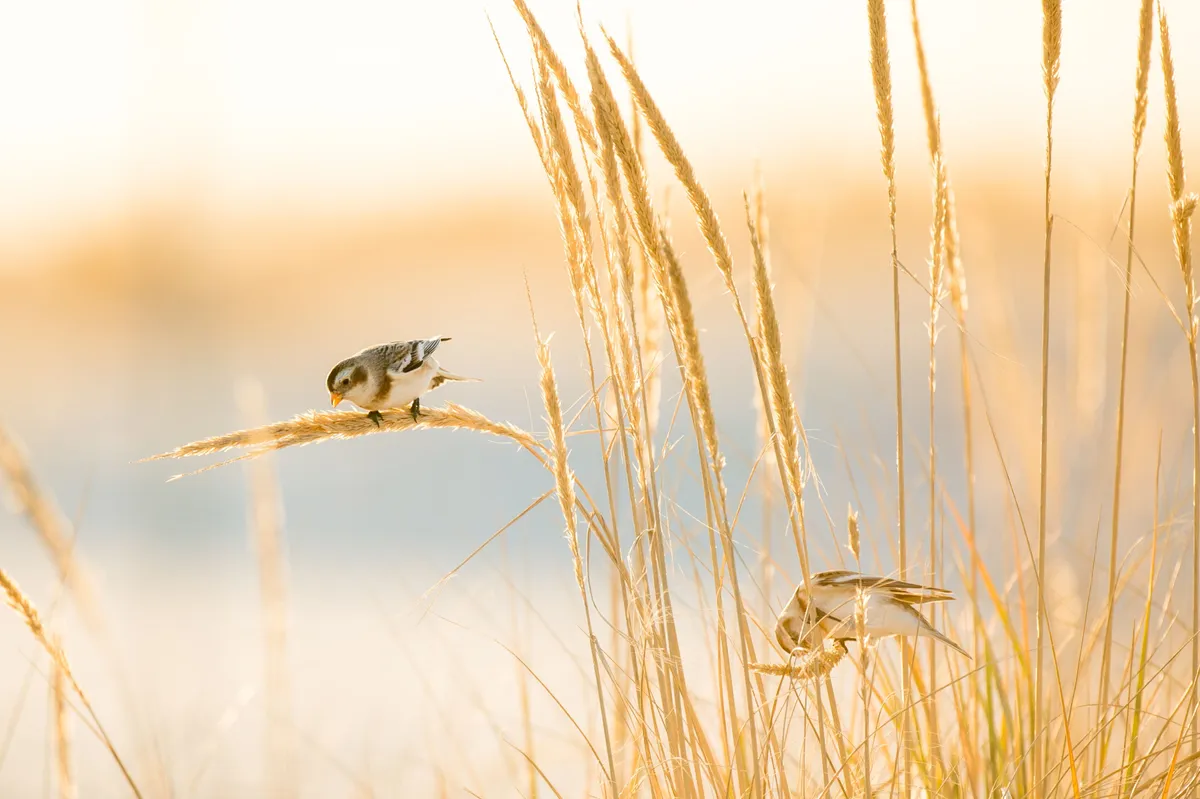Haul yourself up Ben Nevis this summer – that zigzag bit goes on forever, doesn’t it? – and you might set eyes on one of Britain’s special birds.
We should be very proud to have a tiny breeding population of snow buntings (Plectrophenax nivalis) on our Scottish mountains, because they are arguably the world’s toughest small bird, more used to the company of polar bears than tourists in inadequate footwear.
In this guide we take a closer look at the snow bunting, revealing what it looks like, where you can see it, its song, nesting habits and UK populations.
Interested in learning more about Britain’s songbirds? Check out our guides to tits, warblers and blackbirds.
Buntings guide
Buntings are a group of seed-eating birds that bear many of the same characteristics as finches. Learn all about these special songbirds, including six species to look out for in Britain, with your expert guide to buntings.

Snow bunting identification
Snow buntings are easy enough to identify, as they are large songbirds, usually with bold white in the wing. There is a bewildering variety of plumages, though, to get to grips with – summer plumage, winter plumage, males, females and young – ranging from bold black-and-white to streaky pink-brown. They are all glorious.

Birds in flocks have a distinct habit of queue-jumping, flying over each other to get to the front of the group, meaning that the whole flock seems to roll forward. Most individuals have obvious white wing-bars, making this quite a phenomenon to see.

Snow bunting call
If you find a flock, listen out for the distinctive, pleasing, rolling trill. The song is a short, crystal-clear melody.
Credit: Birdland Unlimited
Snow bunting adaptations
The snow bunting breeds further north than any other small bird in the world, well into the permanent ice. It has particularly thick plumage, and when it walks, it often crouches somewhat so that the feathers cover part of the legs, an adaptation to heat loss.

Snow bunting habitat and distribution
Although the mountains have a resident population augmented by high altitude winter visitors, the snow bunting is better known to birdwatchers as a winter visitor to the chilly coasts, especially along the east.
Small flocks eke out a tough living finding seeds among dunes, saltmarshes and coastal fields.

Snow bunting nests
These buntings nest on the ground, making a big, bulky, cosy structure as befits the climate – it is often adorned with the feathers of another extreme hardy Arctic species, the Ptarmigan. The nest is usually in a rocky outcrop.

Snow bunting populations
Snow buntings are uncommon and localised in the UK, with just 60 breeding pairs, up to 11,250 in winter (Amber List of Conservation Concern).
